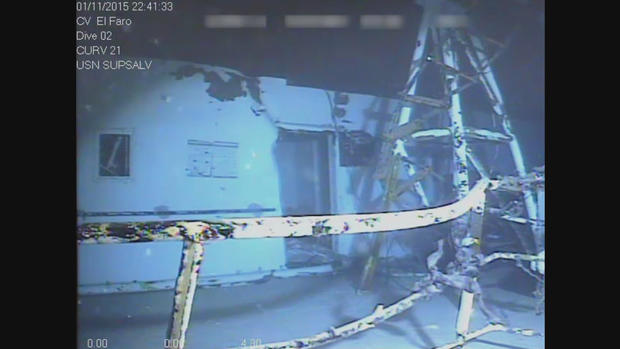How the Navy films a shipwreck
Nearly three miles under water -- deeper than the Titanic -- lies El Faro, a cargo ship that sunk in the Bermuda Triangle last October when it fell victim to Hurricane Joaquin along with its 33 crewmembers. On 60 Minutes this week, viewers are taken inside the investigation being conducted by the National Transportation Safety Board, and get a rare look at the shipwreck itself thanks to a remotely piloted vehicle, known as CURV.
"It's amazing technology," 60 Minutes correspondent Scott Pelley tells Overtime editor Ann Silvio in the video above. "The ship, of course, is at a depth that no diver could ever reach. So they go down with the CURV."
CURV stands for "Cable-controlled Underwater Recovery Vehicle," and U.S. Navy Captain Gregg Baumann, the Navy's supervisor of salvage and diving, shows Scott Pelley how it is aiding the search for El Faro's black box. "At the end of the day what it is that you really want to do is bring answers back, help bring closure to the families," Baumann explains in the story, which was produced by Patricia Shevlin and Miles Doran.
CURV has robotic arms and an attached basket that could transport the ship's black box, or "voyage data recorder," back to the surface, Baumann says. It is also equipped with a pan-and-tilt camera and lights bright enough to penetrate the total darkness of ocean depths. Tom Roth-Roffy, the National Transportation Safety Board's lead investigator on the case, shows Pelley clear images of the ship's equipment and cargo transmitted by CURV - a microwave, a printer and a car, all littering the seabed. But the voyage data recorder has yet to be found.
CURV, in its earlier incarnations, has been used by the Navy since the 1960s. Equipped with a claw, it once picked up a hydrogen bomb from the bottom of the Mediterranean Sea, Pelley tells Silvio. And it rescued two men trapped in a mini-submarine in 1973. "They were running out of oxygen and the CURV went down there and grabbed their mini-submarine and brought it up to where it could be lifted to the surface and save those men's lives," Pelley explains.
In the case of El Faro, CURV revealed that the "house" -- the large structure at the rear of the ship where the crew lives and works -- had been stripped of its two upper decks, which were found only later. Roth-Roffy tells Pelley he found the discovery "moving and difficult," because one of the separated decks was the ship's bridge, where Captain Michael Davidson and others were likely fighting the storm. "It was a very big surprise to us to see that," Roth-Roffy says. "Just to see the violence of the sea and the winds that would have had to occur to cause that kind of an event."
Pelley, too, was struck by CURV's images. "One of the most haunting pictures is where you see the name of the ship on the stern, El Faro, there which translated means 'The Lighthouse,'" he says. In this case, however, it was CURV that provided a beacon in the darkness, offering some desperately needed answers about El Faro's murky fate.
Editor's note: In April, El Faro's voyage data recorder was located about a quarter of a mile away from the main wreckage. In July, the NTSB and the Navy will embark on another mission to retrieve it.
This video was originally published Jan. 3, 2016. It was produced by Sarah Shafer Prediger and Ann Silvio, and edited by Sarah Shafer Prediger.
Stock footage supplied by Periscope Film LLC
